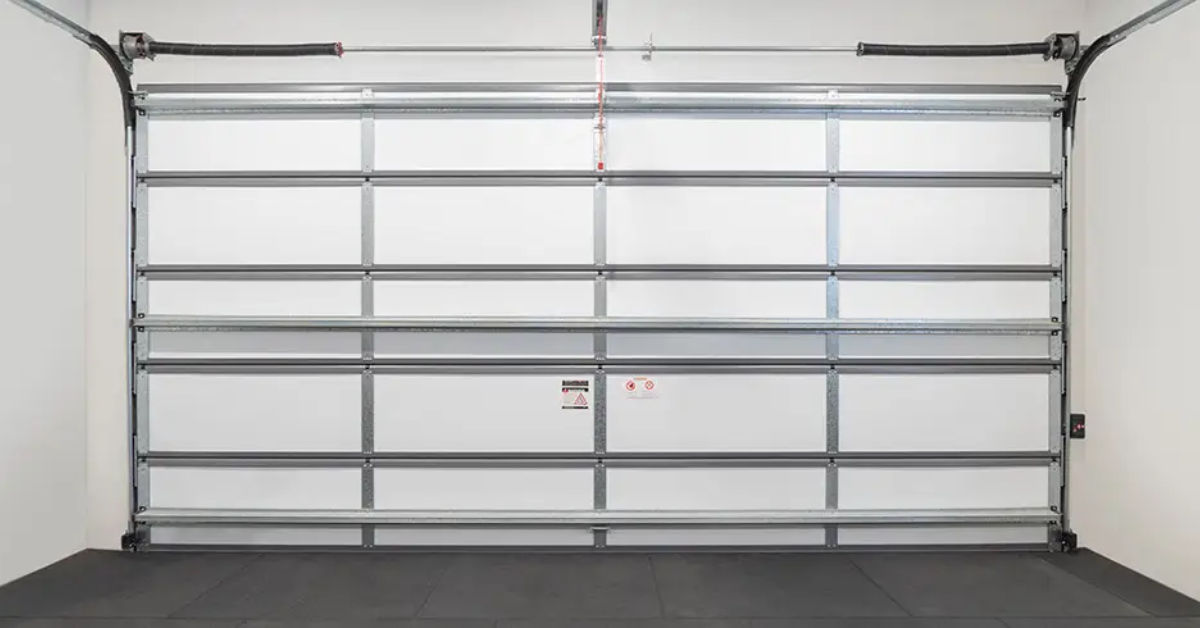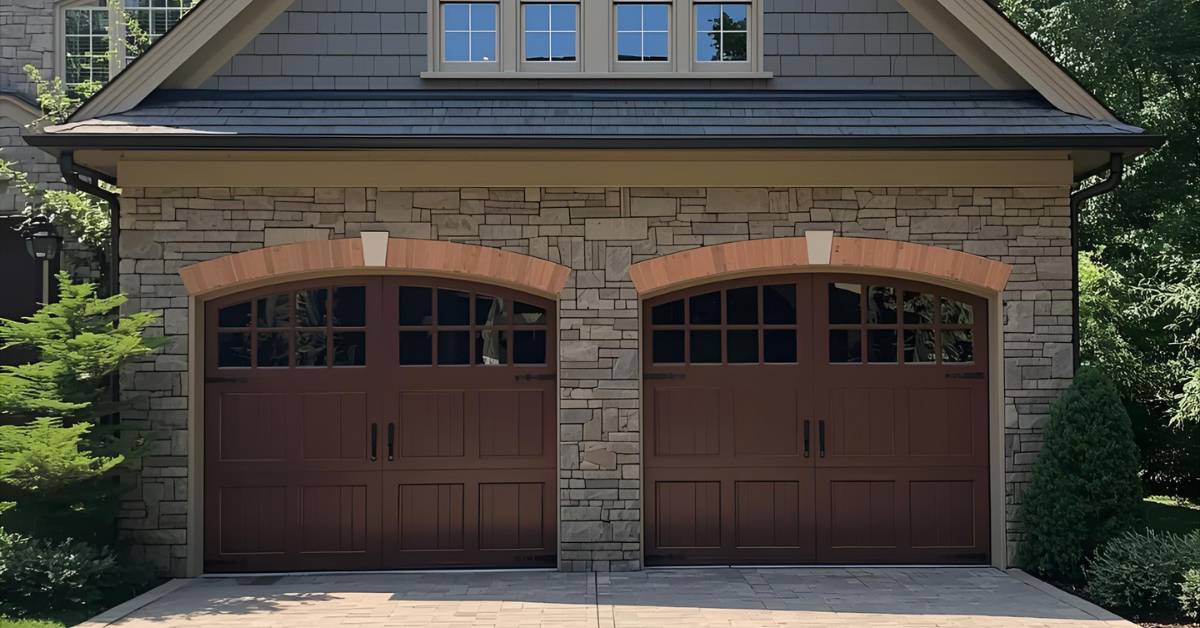What To Use To Insulate Garage Door?
When it comes to home comfort and energy efficiency, the garage often remains an overlooked area. However, insulating your garage door is a simple yet effective way to enhance both the comfort of your living space and the efficiency of your home. Garage door insulation serves as a barrier against the outdoor elements, helping to regulate temperatures inside the garage and minimize energy loss. Whether you use your garage for parking vehicles, storing belongings, or as a workshop or recreational area, proper insulation can make a significant difference in maintaining a comfortable environment year-round.
During hot summer months, insulation helps to keep the garage cooler by blocking out heat from the sun. This not only makes the space more pleasant to work in but also reduces the strain on your home's cooling system, potentially lowering energy bills. Similarly,
in cold winter months, insulation acts as a buffer against chilly temperatures, helping to retain heat and prevent cold drafts from entering your home.
Beyond temperature control, insulating your garage door offers additional benefits such as noise reduction and protection of stored items. Insulation helps dampen noise from outside, creating a quieter environment inside the garage. It also helps to safeguard valuable belongings from extreme temperatures, moisture, and humidity, prolonging their lifespan and preserving their condition.
Types of Insulation Materials for Garage Doors
Several options exist for insulating your garage door, each with its own characteristics and benefits. Let's take a closer look at three popular insulation materials: foam board, reflective foil, and fiberglass batt insulation.
Foam Board Insulation:Foam board insulation consists of rigid foam panels that are lightweight and easy to handle. It offers excellent thermal resistance, helping to keep your garage warmer in winter and cooler in summer. Foam board insulation is relatively easy to install, typically requiring adhesive or mechanical fasteners to attach it to the garage door.
Reflective Foil Insulation:Reflective foil insulation features layers of reflective foil sandwiched between foam or bubble wrap. It works by reflecting radiant heat away from the garage door, helping to maintain a comfortable temperature inside. Reflective foil insulation is particularly effective in hot climates, where it can reduce heat gain and minimize the need for excessive air conditioning. Installation is relatively straightforward, with the material typically being stapled or taped to the garage door.
Fiberglass Batt Insulation:Fiberglass batt insulation consists of fiberglass fibers held together by a binding agent. It offers good thermal insulation and sound absorption properties, making it a versatile option for garage door insulation. Fiberglass batts are available in pre-cut sizes to fit standard garage door panels, making installation relatively simple. However, care must be taken when handling fiberglass insulation to avoid skin irritation, and proper protective equipment should be worn during installation.
Pros and Cons of Each Insulation Material
Foam Board Insulation
Pros:
- Excellent thermal resistance
- Lightweight and easy to handle
- Can be installed with adhesive or mechanical fasteners
Cons:
- May require additional sealing to prevent air leakage
- Can be more expensive than other insulation materials
Reflective Foil Insulation
Pros:
- Reflects radiant heat away from the garage door
- Effective in hot climates
- Relatively easy to install
Cons:
- Less effective in colder climates
- May require additional insulation for optimal performance in extreme temperatures
Fiberglass Batt Insulation
Pros:
- Good thermal insulation and sound absorption
- Available in pre-cut sizes for easy installation
- Versatile and cost-effective option
Cons:
- Requires careful handling to avoid skin irritation
- May compress over time, reducing effectiveness
Factors to Consider When Choosing the Right Material for Your Garage Door
When selecting insulation material for your garage door, consider factors such as climate, budget, and installation preferences. Foam board insulation is ideal for climates with moderate temperatures, while reflective foil insulation is best suited for hot climates. Fiberglass batt insulation offers versatility and cost-effectiveness, making it a popular choice for many homeowners. Ultimately, choose the insulation material that best meets your needs and budget, ensuring a comfortable and energy-efficient garage space for years to come.
Cost-Effectiveness and Longevity
You should consider the cost-effectiveness of different insulation materials when insulating your garage door. While some options may have a higher upfront cost, they could provide greater long-term savings in terms of energy efficiency and durability. Foam board insulation, for example, may have a higher initial investment, but its excellent thermal resistance can lead to significant energy savings over time. Reflective foil insulation, on the other hand, is more budget-friendly upfront and particularly effective in hot climates, where it can reduce the need for excessive air conditioning. Fiberglass batt insulation offers a good balance of cost-effectiveness and performance, making it a popular choice for many homeowners.
Considering the Durability and Lifespan of Each Option
In addition to cost-effectiveness, it's essential to consider the durability and lifespan of insulation materials for your garage door. Foam board insulation is known for its durability and resistance to moisture, making it suitable for long-term use in various climates. Reflective foil insulation is also durable but may require additional protection against punctures and tears. Fiberglass batt insulation is relatively durable but may compress over time, reducing its effectiveness. When choosing insulation for your garage door, prioritize materials that offer a good balance of cost-effectiveness, durability, and performance to ensure optimal long-term benefits.
Installation Methods and Considerations
One of the primary considerations when insulating your garage door is whether to tackle the project yourself or hire a professional installer. DIY installation offers cost savings and flexibility, allowing you to work at your own pace and choose materials and methods that suit your preferences. However, DIY installation requires careful planning, accurate measurements, and proper tools and techniques to ensure effective insulation. Professional installation, while more expensive, offers expertise and convenience, ensuring proper installation and optimal performance. Consider your budget, time constraints, and comfort level with home improvement projects when deciding between DIY and professional installation.
Step-by-Step Guide to Insulating Your Garage Door
Whether you choose DIY or professional installation, a step-by-step guide can help you navigate the insulation process effectively. Start by preparing the necessary tools and materials, including insulation material, tape measure, utility knife, adhesive, and safety gear. Measure the dimensions of your garage door panels and cut the insulation material to fit each panel. Secure the insulation to the door using adhesive or mechanical fasteners, ensuring a tight seal around the edges. Test the operation of your garage door to ensure it opens and closes smoothly without any obstruction. Monitor the performance of your insulation over time and make adjustments as needed to optimize comfort and energy efficiency. By following these steps and considerations, you can successfully insulate your garage door and enjoy the benefits of improved energy efficiency and comfort for years to come.
Conclusion: Making the Right Choice
The process of insulating your garage door involves evaluating various factors such as insulation materials, cost-effectiveness, installation methods, and durability. By considering these factors and weighing the pros and cons of each option, you can make an informed decision that suits your needs and budget. Whether you choose foam board, reflective foil, fiberglass batt insulation, or opt for DIY or professional installation, the goal is to create a more comfortable, energy-efficient, and functional garage space. By empowering readers with knowledge and insights into garage door insulation, we hope to enable them to make the right choice for their home improvement needs.




